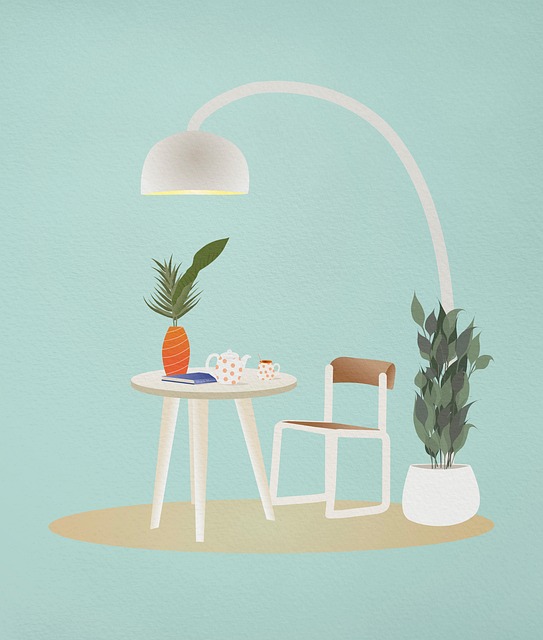Realistic interior 3D renders revolutionize design communication by offering immersive virtual walkthroughs, bridging concept and realization quickly and accurately. These tools facilitate informed material and finish choices through precise light-material interactions, enhancing decision-making, client satisfaction, and space quality. Through photorealistic visualizations, designers achieve harmony between aesthetics and functionality, fostering collaboration and satisfying outcomes.
In today’s digital design landscape, material and finish simulations empower designers with unprecedented control over their projects. This article delves into the transformative power of these tools, exploring how they facilitate informed decisions through realistic interior 3D renders. We dissect the process from understanding material properties to making aesthetic and functional choices, ultimately enhancing design accuracy and client satisfaction. Discover how advanced simulations are revolutionizing the way we envision and create spaces.
Understanding the Power of Material Simulations
In today’s digital era, material and finish simulations have emerged as indispensable tools for designers, enabling them to create not just visually appealing, but also realistic interior 3D renders. These simulations go beyond mere aesthetics by offering a deeper understanding of how different materials and finishes interact with light, reflect textures, and affect the overall ambiance of a space. By virtually exploring various options, designers can make informed decisions about material choices that would otherwise be time-consuming and costly to test physically.
The power of these simulations lies in their ability to bridge the gap between concept and realization. They allow for quick iterations and adjustments, ensuring that the final design aligns seamlessly with the client’s vision and expectations. With realistic interior 3D renders, designers can showcase a project’s potential to clients, fostering better communication and stronger relationships. This technological advancement not only streamlines the design process but also enhances the overall quality of built spaces.
Creating Realistic Interior 3D Renders
Creating realistic interior 3D renders is a game-changer for designers and architects, offering a powerful tool to visualize and communicate their creative vision. By leveraging advanced rendering software and techniques, professionals can bring interiors to life with stunning accuracy. This process involves meticulously recreating not just the structural elements but also the textures, lighting, and materials that define a space.
Realistic interior 3D renders provide an immersive experience, allowing clients and stakeholders to virtually walk through and appreciate the design before construction even begins. With precise simulations, designers can quickly iterate and refine their concepts, ensuring that the final product meets expectations. This technology is especially valuable for showcasing intricate details, such as complex furniture arrangements, unique architectural features, and thoughtful material choices, ultimately enhancing the decision-making process and client satisfaction.
Finish Choices: From Texture to Shine
Finish choices play a pivotal role in transforming raw materials into visually appealing and cohesive interior spaces, as evidenced by the growing popularity of realistic interior 3D renders. Texture and shine are two primary dimensions that designers can manipulate to achieve diverse esthetic outcomes. Textures range from subtle matt finishes that impart a sense of warmth and depth, ideal for creating intimate and relaxing atmospheres, to bold, tactile patterns that add drama and character to larger areas. Shine, on the other hand, offers a spectrum from soft, diffused reflections that enhance natural light, creating an air of sophistication, to intense, sparkling glints that can make smaller spaces appear larger and more vibrant.
Understanding how different finishes interact with lighting and reflectivity is key to making informed design decisions. Realistic interior 3D renders serve as valuable tools for visualizing these interactions, allowing designers and clients alike to experiment with various options before final selection. This technology bridges the gap between concept and realization, ensuring that the finished product not only meets expectations but exceeds them, thanks to meticulous attention to material and finish simulations.
Design Decisions: Balancing Aesthetics and Functionality
In the realm of design, making informed choices between aesthetics and functionality is a delicate dance. While visually appealing designs can capture the imagination, they must also serve the practical needs of users. This is where realistic interior 3D renders play a pivotal role. By creating photorealistic visualizations, designers can present their concepts in a tangible manner, allowing clients and stakeholders to truly grasp the space’s potential. With these renders, every detail—from material textures to light interactions—is meticulously considered, ensuring both visual allure and practicality.
Striking this balance is crucial for successful design outcomes. For instance, selecting finishes that are visually stunning yet durable in high-traffic areas ensures longevity. Similarly, considering the functionality of a space dictates the layout and placement of furniture, appliances, and other features, all while maintaining an aesthetically pleasing composition. Realistic 3D renders facilitate this process by providing a clear, shared understanding among all project stakeholders, fostering collaboration and ultimately leading to more satisfying design decisions.
Material and finish simulations are powerful tools that enable designers to make informed decisions, balancing aesthetics and functionality. By utilizing realistic interior 3D renders and exploring various finish choices from texture to shine, professionals can create spaces that not only look stunning but also serve their intended purposes effectively. These simulations provide a clear vision of the final result, ensuring design excellence in every project.
